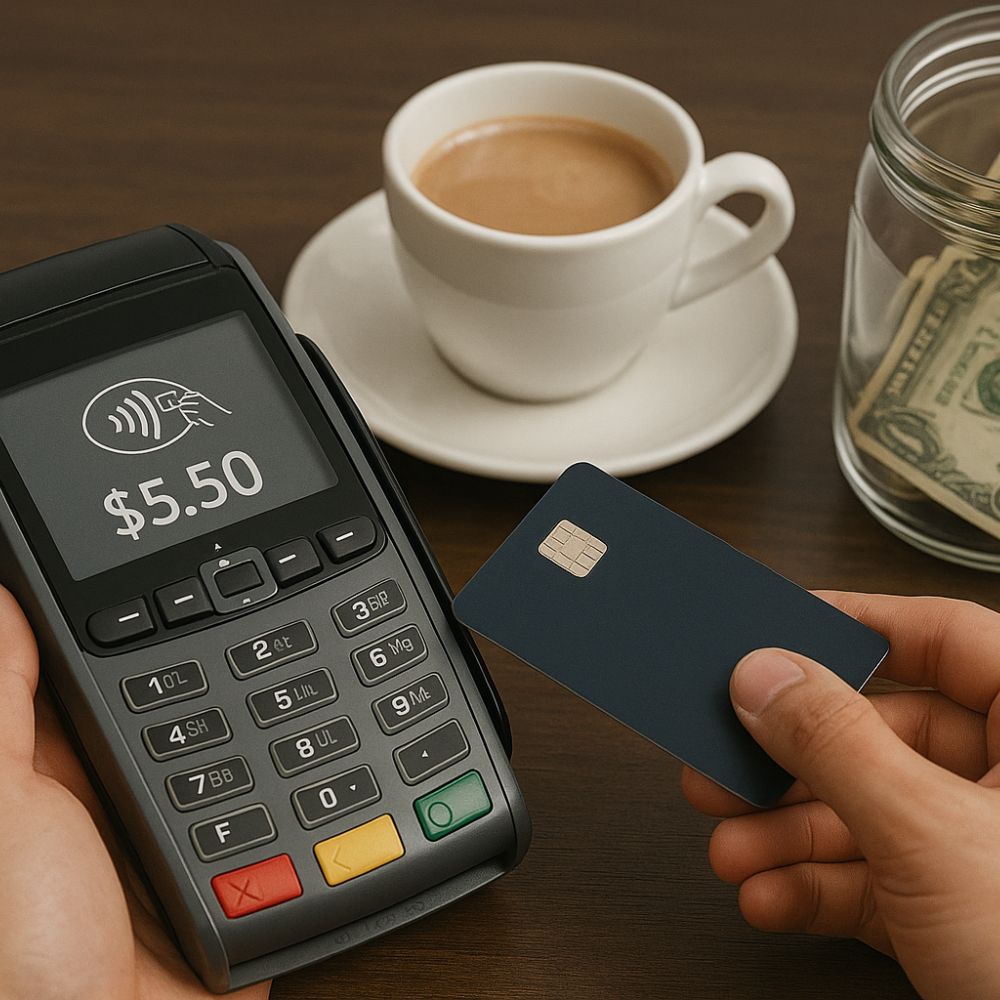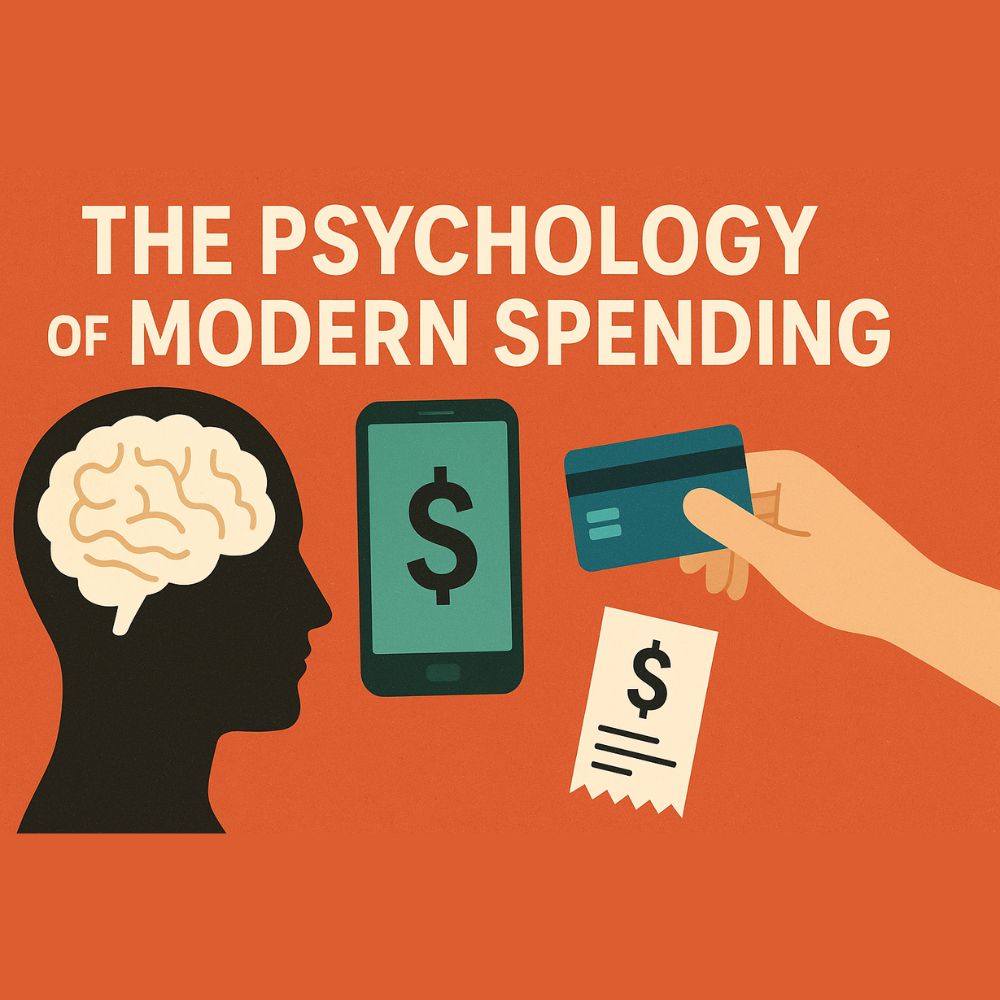You’ve probably had this moment recently: You’re at your favourite local coffee shop, the
barista hands you the terminal, and right there on the screen—or stuck to it with a
suspiciously permanent sticker—is a tiny message that says:
“Card Surcharge 1.9%”
Ah yes, because the coffee wasn’t already $5.50 for what is, let’s face it, bean water with
foam.
The Cost of Doing Business… or the Cost of Staying
Alive?
Let’s start with the basics. Credit card companies (Visa, Mastercard, your new favourite Buy Now Pay Later provider) charge businesses transaction fees. These can range from 1.5% to 3.5% depending on the card, the provider, and what sort of dark magic is happening behind the scenes of the payment gateway. Now, if you’re a giant corporation with economies of scale and a legal team that eats contracts for breakfast, you absorb those fees into your margins and move on. But if you’re a small business trying to stay afloat in a world where eggs cost more than rent in 1992, those fees hurt. So, many just pass them on. But not always evenly. In some cases, that “1.9%” surcharge is more than the actual cost of the transaction. That’s where things go from understandable to eyebrow-raising. A 2023 Reserve Bank of Australia report found that 70% of small businesses consider payment processing fees a “significant burden.” So maybe it’s not about greed after all—maybe it’s about survival. Or maybe it’s a little of both. Capitalism rarely comes without a side of cynicism.

A Cashless World with a Price Tag
Governments around the world have been pushing for cashless economies
Governments around the world have been pushing for cashless economies. Why?
Because digital money is traceable. It’s harder to launder, easier to tax, and almost
impossible to lose in a laundromat dryer.
But here’s the kicker:
By allowing card surcharges, governments are—ironically—incentivising the use of cash.
Picture this: A café adds a 1.9% surcharge for card payments. The customer pulls out a
crispy $100 note instead. The café owner pockets it. The bank never sees it. The tax office?
Also blind. Everyone’s happy—except, of course, the government who just lost out on its
slice of the pie.
In fact, the Australian Taxation Office estimates that $11 billion is lost every year to the
shadow economy—much of it due to cash transactions that never make it to a ledger. So
while surcharges may seem like a minor annoyance, they may be feeding a much larger
problem.
The Psychology of Pricing: The Devil’s in the Decimal
Let’s talk brains. Because the way we perceive pricing isn’t logical—it’s emotional.
Studies have shown that consumers hate surcharges more than price increases, even
when they cost exactly the same.
Why?
Because surcharges feel sneaky. It’s not the $0.50 that hurts—it’s the betrayal. You thought
the coffee was $5.50. You committed to that price. You mentally accepted your overpriced
caffeine addiction. And then—bam!—an extra 10 cents at the point of sale feels like a tiny
moral failure.
This is known as the “pain of paying”—a concept popularised by behavioural economist
Drazen Prelec. The more visible and separated a cost is from the main purchase, the more it
stings. That’s why subscriptions like Netflix hide the pain in auto-renewals, while surcharges
poke you right in the financial nerve.
So when businesses add a fee after you’ve already decided to buy, it feels like they’re
playing games with your trust. Even if the logic makes sense, the psychology doesn’t.
Tipping Point: Gratitude or Guilt?
Let’s pivot (and tiptoe) into tipping.
In Australia, tipping is rare. Why? Because employees get a living wage. If someone goes
above and beyond, you might tip. But it’s not expected. It’s gratitude, not obligation.
Now contrast that with America, where tipping has spiraled into an alternate currency
system.
At restaurants, 20% is baseline—even if your only interaction with the waiter was a
half-smile and a water refill.
Even worse, tipping prompts are now popping up on digitalIn 2024, a U.S. consumer report showed that 67% of Americans feel “tipping fatigue”
kiosks at places where no one actually serves you anything. You tap your order, pick it up
yourself, and then get asked if you want to leave a 25% tip for… whom? The robot?
In 2024, a U.S. consumer report showed that 67% of Americans feel “tipping fatigue”,
and over half admitted they feel pressured to tip more than they want—simply because the
staff is watching, or the tablet is facing them like a digital guilt trip.
Tipping and surcharges have something in common: they’re both ways of outsourcing the
cost of doing business to the customer. You’re not just paying for the product. You’re now
funding the infrastructure that delivers it.
So, What’s the Best Solution?
There’s no perfect answer, but here are a few models to consider:
- Absorb the cost into pricing
Just bump prices by 1.9% and be done with it. No surcharge, no drama.
● ✅ Simpler for customers
● ❌ Might turn off price-sensitive buyers
● ❌ Feels like a quiet tax hike - Keep the surcharge
Be transparent and upfront about it.
● ✅ Preserves margin
● ❌ Triggers customer frustration
● ❌ Might push people toward cash - Dual pricing (Cash vs Card)
List two prices: one for cash, one for card.
● ✅ Full transparency
● ❌ Feels clunky and old-school
● ❌ May encourage under-the-table payments again
Honestly, it’s a bit of a “pick your poison” situation.
The Road Ahead: What Happens Next?
As digital wallets and cryptocurrency mature, we may see the death of surcharges. Why?
Because the transaction costs could be baked invisibly into blockchain-based systems. No
more middlemen. No more hidden fees. Just… math.
Alternatively, as businesses become more automated and staff overhead drops, there may
be less pressure to nickel-and-dime consumers through surcharges and tipping prompts.
Or maybe, dystopically, we’ll all just get used to it.
Like paying for checked baggage, buying water at airports, or paying extra to board a plane
3.5 minutes earlier than everyone else.
Final Thoughts: Who’s Really Paying Here?
That little “1.9% surcharge” sticker on the EFTPOS machine?
It’s not just a cost.
It’s a reflection of a system that’s shifting more and more responsibility—and risk—onto the
individual.
We’re not just paying for products anymore. We’re paying to keep the machine running.
And the question we should be asking isn’t “Why is there a fee?”
It’s “Why are we the ones covering it?”




